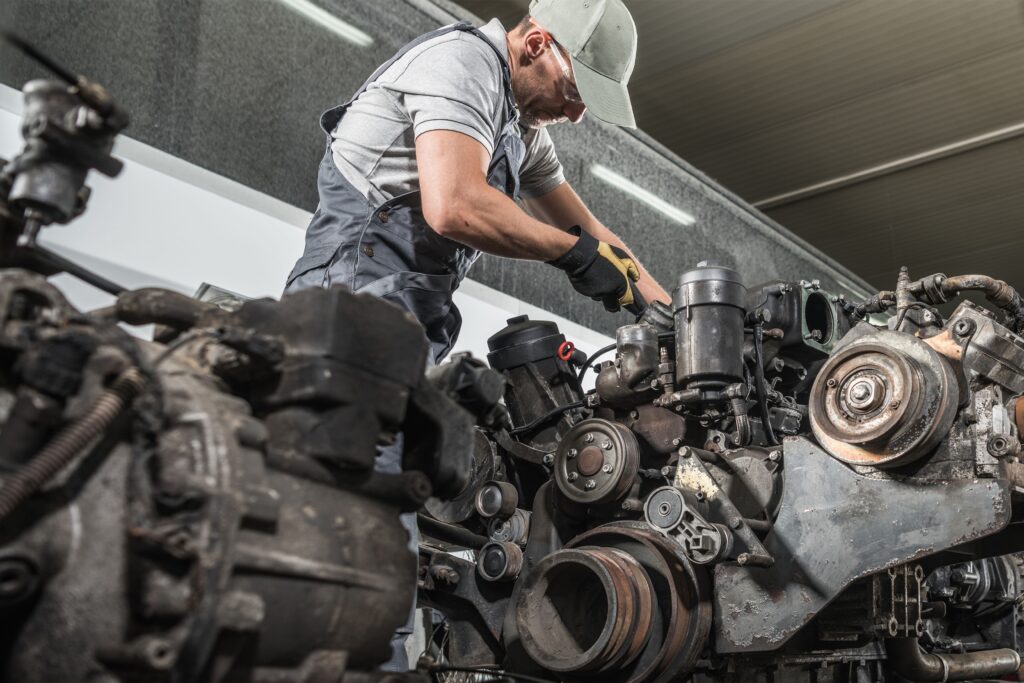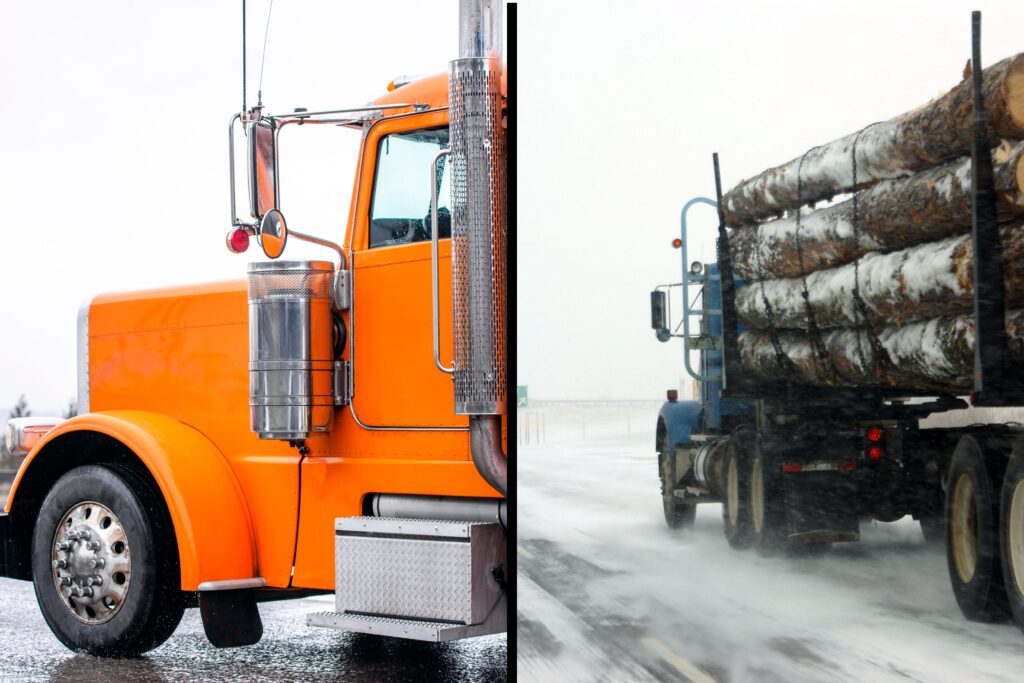Ensuring your safety on the road is vital for both yourself and others. Begin by prioritizing proper rest to combat fatigue and enhance alertness. Implement defensive driving techniques such as checking blind spots, maintaining safe distances, and adjusting speed accordingly. Stay proactive with regular vehicle maintenance, keep an eye on weather conditions for preparedness, and maintain efficient communication and emergency protocols. These tips lay a solid foundation for safe trucking practices, setting you on the path for a smooth and secure journey ahead.
Top Essential Safety Tips for Truckers
Importance of Proper Rest

Ensuring you take regular breaks and prioritize quality sleep is essential for maintaining alertness and focus while driving. Adequate rest not only combats fatigue but also enhances your ability to react to unexpected situations on the road. Remember, staying well-rested is a key factor in promoting safe driving practices and preventing accidents.
Rest Break Frequency
Prioritizing sufficient rest breaks is essential for truckers to combat driver fatigue and guarantee alertness on the road. FMCSA mandates specific rest periods to prevent accidents caused by drowsiness or exhaustion. Taking regular breaks helps maintain driver focus and reduces the risk of accidents due to fatigue.
By adhering to these mandated rest intervals, you are not only prioritizing your well-being and mental health but also ensuring overall safety while operating your commercial vehicle. Remember, prioritizing rest breaks can notably improve your performance, reaction times, and overall safety on long hauls. Make it a habit to take breaks at the recommended intervals to stay sharp and focused during your journeys, contributing to a safer driving experience for yourself and others on the road.
Sleep Quality Importance
Proper quality sleep is essential for truckers to maintain peak alertness and safety while on the road. As a trucker, getting sufficient rest is crucial as fatigue can severely impact your reaction times and decision-making abilities. Research shows that drowsy driving is a substantial factor in accidents, emphasizing the importance of adequate sleep.
The FMCSA recognizes this by mandating specific rest periods to combat driver fatigue and enhance road safety. Prioritizing quality sleep not only boosts alertness but also reduces stress and improves your overall well-being. By ensuring you get proper rest and taking regular breaks, you significantly enhance your ability to operate your vehicle safely for extended periods, promoting a safer driving experience for yourself and others on the road.
Alertness and Driving
To maintain peak alertness and prevent accidents while driving, truckers must prioritize getting sufficient rest and taking mandated breaks to combat fatigue. Ensuring you are well-rested is vital for your safety on the road. Here are some practical tips to help you stay alert:
- Get 7-9 Hours of Sleep: Aim for a full night’s rest before hitting the road.
- Take Regular Breaks: Follow mandated rest periods to refresh your mind.
- Stay Hydrated: Dehydration can contribute to fatigue, so drink water regularly.
- Avoid Heavy Meals: Large meals can make you feel drowsy, opt for light snacks instead.
- Use Alertness Aids Wisely: If needed, use caffeine or short naps strategically to boost alertness.
Prioritizing rest leads to better decision-making and reaction times, ensuring a safer journey for you and others on the road.
Defensive Driving Techniques

When driving defensively, remember to always check your blind spots before changing lanes, manage your speed according to road conditions, and stay vigilant to avoid potential hazards. Maintaining a safe following distance, scanning the road ahead, and being aware of blind spots are vital aspects of defensive driving. By practicing these techniques, you can enhance your road safety and respond effectively to unexpected situations.
Lane Change Safety
Using your mirrors and turn signals to indicate your intentions before changing lanes is an essential defensive driving technique for guaranteeing lane change safety. When maneuvering through traffic, remember the following tips:
- Check blind spots by looking over your shoulder to confirm no vehicles are in your path.
- Avoid sudden lane changes and give other drivers enough time to react.
- Maintain a safe following distance when changing lanes to prevent accidents.
- Be aware of surrounding traffic and adjust your speed accordingly when changing lanes.
- Communicate effectively with other drivers by using your signals consistently and appropriately.
Speed Management Tips
After ensuring lane change safety through proper mirror checks and signaling, mastering speed management is essential for safe trucking operations on the road. To maintain a safe speed, adhere to posted limits and adjust for road conditions like weather or traffic. Avoid aggressive behaviors such as speeding, tailgating, or sudden lane changes to reduce accident risks. Practice defensive driving by scanning the road ahead, anticipating hazards, and adjusting speed accordingly. Use cruise control on highways to maintain a consistent speed and prevent unintentional speeding. Remember to slow down when approaching curves, intersections, or construction zones for safe maneuvering and reaction time. These speed management tips will help you navigate the roads safely and efficiently.
Avoiding Blind Spots
To enhance your safety on the road, mastering the skill of avoiding blind spots is essential for defensive driving techniques as a trucker. When it comes to handling blind spots effectively, consider the following:
- Check blind spots before changing lanes, as they can extend up to 200 feet behind your truck.
- Utilize convex mirrors and adjust side mirrors properly to minimize blind spots and enhance visibility.
- Avoid lingering in the blind spots of other vehicles and be aware of your own truck’s blind spot areas.
- Exercise extra caution when passing or being passed by other vehicles to prevent accidents related to blind spots.
- Regularly check blind spots by adjusting mirrors correctly and physically looking out the window before making any maneuvers.
Regular Vehicle Maintenance

To maintain your truck’s essential performance and guarantee safety on the road, it is vital to conduct regular pre-trip inspections and schedule maintenance checks based on mileage or time intervals. Monitoring engine performance, fuel efficiency, and addressing any warning lights promptly are critical practices to prevent breakdowns and mechanical failures while driving. Keeping a detailed log of maintenance records and following manufacturer’s guidelines for service intervals will help maintain your vehicle’s reliability and contribute to a safe journey.
Scheduled Maintenance Checks
Regular vehicle maintenance plays a crucial role in guaranteeing truckers’ safety and the peak performance of their vehicles on the road. Here are essential scheduled maintenance checks to keep your truck in top condition:
- Inspect Tires: Regularly check tire pressure and tread depth to ensure peak traction.
- Check Brakes: Verify brake functionality to guarantee efficient stopping power.
- Examine Lights: Ensure all lights are working correctly for visibility on the road.
- Monitor Fluid Levels: Regularly top up fluids such as oil, coolant, and brake fluid to prevent engine damage.
- Review Essential Components: Check belts, hoses, and other crucial parts to prevent unexpected breakdowns.
Importance of Upkeep
Maintaining consistent upkeep through regular vehicle maintenance is crucial for maximizing safety and performance on the road. Scheduled maintenance plays an important role in preventing breakdowns, reducing repair costs, and extending your truck’s lifespan. By checking fluid levels, brakes, tires, lights, and critical components regularly, you can avoid accidents and ensure a reliable journey. Proactively following manufacturer recommendations for maintenance not only enhances fuel efficiency but also boosts overall reliability. Adhering to a maintenance schedule not only helps comply with regulatory requirements but also ensures your vehicle’s roadworthiness. Stay proactive in caring for your truck to prevent unforeseen issues and enjoy smoother, safer travels.
Weather Awareness and Preparedness

Monitor weather forecasts diligently and equip yourself with the necessary tools to stay informed about changing conditions. Guarantee you have emergency response strategies in place to deal with adverse weather situations effectively. Being prepared and proactive can greatly enhance your safety and that of others on the road.
Weather Forecasting Tools
Equipped with cutting-edge weather forecasting tools, truckers can now access real-time updates on weather conditions to make informed decisions ensuring maximum safety on the road. These tools offer insights into precipitation, wind speeds, temperature changes, and severe weather alerts, enhancing safety by enabling you to adjust your driving behavior and plan for delays. By monitoring weather patterns, you can avoid hazardous conditions and proactively prepare for changing weather, reducing the risk of accidents and delays. Utilizing these tools improves overall trip planning strategies, ensuring you are aware of potential weather-related challenges ahead.
- Receive real-time updates on weather conditions
- Gain insights into precipitation and wind speeds
- Monitor temperature changes and severe weather alerts
- Adjust driving behavior and plan for delays
- Proactively prepare for changing weather
Emergency Response Strategies
Prioritize your safety by staying vigilant about weather conditions and preparing for emergencies while on the road as a trucker. Monitor weather forecasts regularly to anticipate any potential hazards, adjusting your driving behavior accordingly during adverse weather conditions to guarantee safety. Be proactive by carrying emergency supplies such as blankets, water, and non-perishable food items for unexpected situations. It’s essential to know the contact numbers for roadside assistance and emergency services in case of weather-related emergencies. If you encounter severe weather, pull over to a safe location and wait out the storm for your safety. Being prepared and informed about weather conditions can help you navigate through challenging situations and ensure a secure journey on the road.
Communication and Emergency Protocols

Guarantee your safety on the road by maintaining efficient radio communication with dispatch, having emergency contact information readily available, and understanding clear emergency procedures. Regularly update your location and any road issues to keep everyone informed and prepared. Remember to train on proper communication protocols for swift and effective responses during emergencies.
Efficient Radio Communication
Implementing effective radio communication protocols is crucial for truckers to maintain seamless communication with dispatch and fellow drivers while guaranteeing road safety and operational efficiency. To enhance your radio communication skills, consider the following tips:
- Speak clearly and concisely to prevent misunderstandings.
- Identify yourself and your location when initiating communication.
- Use proper radio etiquette for efficient communication.
- Report emergencies promptly to receive necessary assistance.
- Stay trained on radio protocols to guarantee smooth coordination with others on the road.
Emergency Contact Information
Always have your emergency contact information easily accessible for quick assistance during unexpected events on the road. Make sure that your list includes important numbers such as roadside assistance, company dispatch, and emergency services. When reaching out to emergency services, clearly communicate your location and situation to expedite help. Regularly update your emergency contact list to guarantee accuracy and readiness in times of need. Additionally, have backup communication methods in place in case of signal or device failure, ensuring you can always reach out for help. Being prepared with the right contacts can make a significant difference in swiftly resolving emergencies and ensuring your safety on the road.
Clear Emergency Procedures
Establishing effective communication channels and clear emergency protocols is paramount for ensuring a swift and coordinated response in critical situations on the road.
- Have a designated emergency contact person: Assign someone who can assist in emergencies and keep them informed.
- Know emergency procedures: Understand the steps to take in case of breakdowns, accidents, or medical issues.
- Keep important contact numbers handy: Have contacts for roadside assistance, towing services, and emergency responders easily accessible.
- Practice emergency protocols: Regularly review and rehearse emergency procedures to stay prepared and composed in stressful situations.
- Communicate efficiently: Stay in touch with dispatch or supervisors during emergencies for a well-coordinated and effective response.
Being well-prepared and having clear protocols in place can make a significant difference in handling emergencies while on the road.
Conclusion
To sum up, remember that safety on the road is non-negotiable. By prioritizing rest, practicing defensive driving, maintaining your vehicle, staying prepared for weather changes, and communicating effectively, you set yourself up for a successful journey. And if you’re in a trucking company already, be sure to also check out our Safety Plans for Trucking Companies!
As the saying goes, ‘An ounce of prevention is worth a pound of cure.’ So, take the necessary precautions, stay alert, and make safety your top priority every time you hit the road. Stay safe out there!










